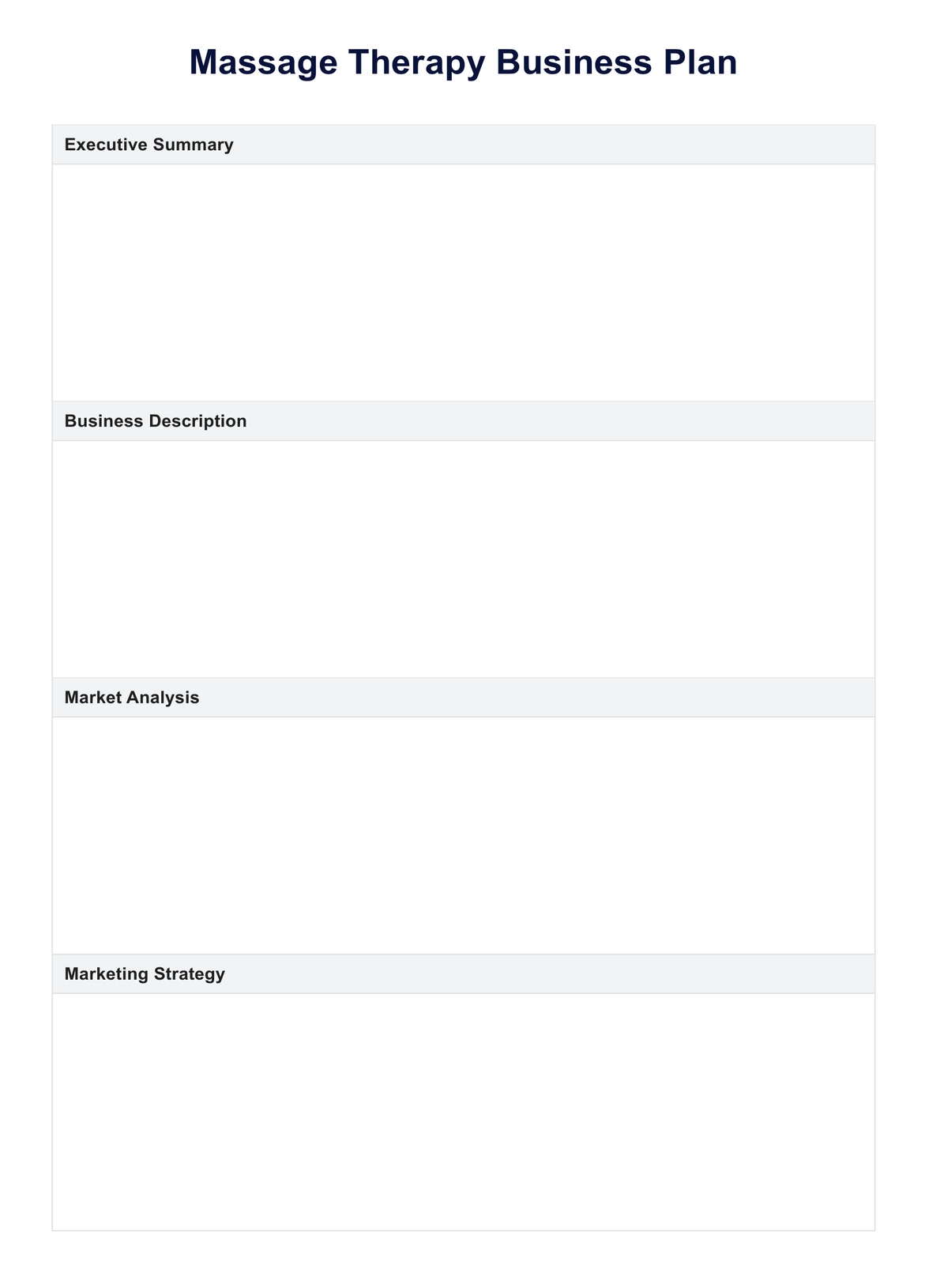A massage therapy business plan should typically be concise and focused, ranging from 5 to 20 pages. It should cover essential aspects such as market analysis, marketing strategies, financial projections, and operational plans.

Massage Therapy Business Plan
Creating a massage therapy business plan? Download Carepatron's free PDF to guide you through the process and help you create a successful massage therapy business plan.
Massage Therapy Business Plan Template
Commonly asked questions
Massage therapy business plans should be reviewed and updated annually or as needed in response to significant changes in the market, industry trends, or business circumstances. Regular updates ensure that the plan remains relevant and aligned with the evolving needs and goals of the business.
Creating a business plan on Carepatron is easy and intuitive. We have an online business plan template for practitioners to create their business plans. Carepatron's user-friendly interface and customizable templates make creating a professional business plan tailored to your massage therapy practice simple.
EHR and practice management software
Get started for free
*No credit card required
Free
$0/usd
Unlimited clients
Telehealth
1GB of storage
Client portal text
Automated billing and online payments











